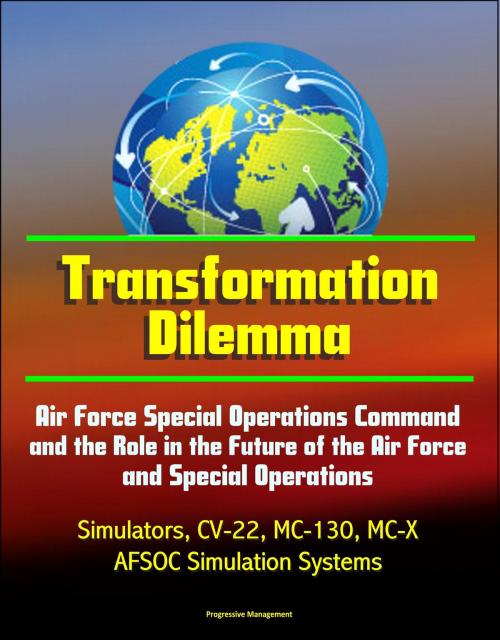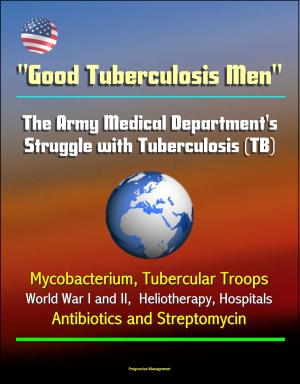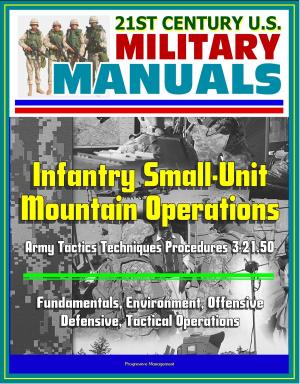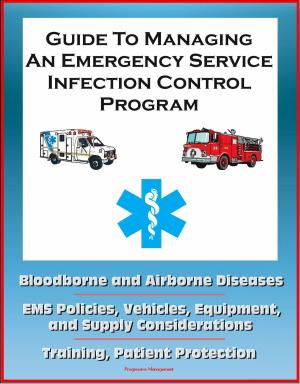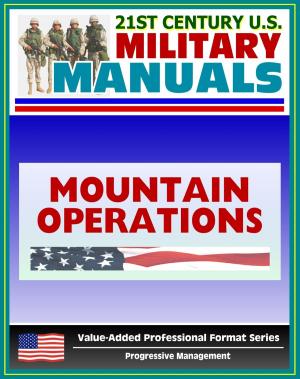Transformation Dilemma: Air Force Special Operations Command and the Role in the Future of the Air Force and Special Operations - Simulators, CV-22, MC-130, MC-X, AFSOC Simulation Systems
Nonfiction, History, Military, Aviation| Author: | Progressive Management | ISBN: | 9781310387944 |
| Publisher: | Progressive Management | Publication: | October 8, 2014 |
| Imprint: | Smashwords Edition | Language: | English |
| Author: | Progressive Management |
| ISBN: | 9781310387944 |
| Publisher: | Progressive Management |
| Publication: | October 8, 2014 |
| Imprint: | Smashwords Edition |
| Language: | English |
The National Security Strategy of the United States issued in September 2002 states "a military structured to deter massive Cold War-era armies must be transformed to focus more on how an adversary might fight rather than where and when a war might occur." To support this focus, the Secretary of Defense issued the final report of the 2001 Quadrennial Defense Review which provides a framework for the services and US Special Operations Command (USSOCOM) to establish material solutions, organizational constructs, and administrative procedures to effect transformation. Given that Air Force Special Operations Command (AFSOC) is both an Air Force major command as well as the air component to USSOCOM, the command has been put into a unique dilemma of trying to support some distinct differences in how the Air Force and USSOCOM plan to transform their organization. Using transformation road maps of both organizations as well as current doctrine and force structure, the paper analyzes congruencies and inconsistencies in both plans with reference to organizing, training, and equipping AFSOC forces. Based on those comparisons, this paper looks at how the current AFSOC long range plan is postured to support both strategies. Also, the Air Force's approach to transformation of Low Density/High Demand (LD/HD) assets will be reviewed with the goal to seek similar applications to AFSOC. Finally, this paper proposes transformation initiatives that the Air Force and USSOCOM could integrate into a joint strategy to meet the goals of DOD transformation.
Contents: INTRODUCTION * DEFINING TRANSFORMATION * Revolution in Military Affairs * Service/USSOCOM Definitions * A Framework for Analysis * THE OVERARCHING STRATEGY AND GUIDANCE * National Security Strategy * Quadrennial Defense Review and Joint Vision 2020 * Joint Vision 2020 * USAF Transformation Flight Plan * Strategic Planning * Task Force Concepts of Operation (CONOPS) * Air Force Transformation Capabilities * USSOCOM Transformation Roadmap * AFSOC Strategic Plan * Summary * TRANSFORMING SPECIAL OPERATIONS TRAINING * Simulators * Readiness Training * Mission Rehearsal * Distributed Mission Training * Exercises * Joint Special Operations Training * Summary * ORGANIZING FOR CHANGE * Air Expeditionary Force * Challenges for Low Density/High Demand (LD/HD) * USSOCOM/USMC Team Experiment * Taking the Next Step in Aviation * Summary * FUTURE SYSTEMS * CV-22 * MC-X * AC-X * Impact of Other Systems in USSOCOM * Summary * CONCLUSIONS * APPENDIX A: AFSOC SIMULATION SYSTEMS * APPENDIX B: AFSOC FLYING HOUR MODEL * GLOSSARY * BIBLIOGRAPHY
The National Security Strategy of the United States issued in September 2002 states "a military structured to deter massive Cold War-era armies must be transformed to focus more on how an adversary might fight rather than where and when a war might occur." To support this focus, the Secretary of Defense issued the final report of the 2001 Quadrennial Defense Review which provides a framework for the services and US Special Operations Command (USSOCOM) to establish material solutions, organizational constructs, and administrative procedures to effect transformation. Given that Air Force Special Operations Command (AFSOC) is both an Air Force major command as well as the air component to USSOCOM, the command has been put into a unique dilemma of trying to support some distinct differences in how the Air Force and USSOCOM plan to transform their organization. Using transformation road maps of both organizations as well as current doctrine and force structure, the paper analyzes congruencies and inconsistencies in both plans with reference to organizing, training, and equipping AFSOC forces. Based on those comparisons, this paper looks at how the current AFSOC long range plan is postured to support both strategies. Also, the Air Force's approach to transformation of Low Density/High Demand (LD/HD) assets will be reviewed with the goal to seek similar applications to AFSOC. Finally, this paper proposes transformation initiatives that the Air Force and USSOCOM could integrate into a joint strategy to meet the goals of DOD transformation.
Contents: INTRODUCTION * DEFINING TRANSFORMATION * Revolution in Military Affairs * Service/USSOCOM Definitions * A Framework for Analysis * THE OVERARCHING STRATEGY AND GUIDANCE * National Security Strategy * Quadrennial Defense Review and Joint Vision 2020 * Joint Vision 2020 * USAF Transformation Flight Plan * Strategic Planning * Task Force Concepts of Operation (CONOPS) * Air Force Transformation Capabilities * USSOCOM Transformation Roadmap * AFSOC Strategic Plan * Summary * TRANSFORMING SPECIAL OPERATIONS TRAINING * Simulators * Readiness Training * Mission Rehearsal * Distributed Mission Training * Exercises * Joint Special Operations Training * Summary * ORGANIZING FOR CHANGE * Air Expeditionary Force * Challenges for Low Density/High Demand (LD/HD) * USSOCOM/USMC Team Experiment * Taking the Next Step in Aviation * Summary * FUTURE SYSTEMS * CV-22 * MC-X * AC-X * Impact of Other Systems in USSOCOM * Summary * CONCLUSIONS * APPENDIX A: AFSOC SIMULATION SYSTEMS * APPENDIX B: AFSOC FLYING HOUR MODEL * GLOSSARY * BIBLIOGRAPHY
